UPSC Daily Current Affairs: 22nd January 2025 | Current Affairs & Hindu Analysis: Daily, Weekly & Monthly PDF Download
GS2/International Relations
The U.S. Withdrawal from WHO: Implications for Global Health
Source: Indian Express
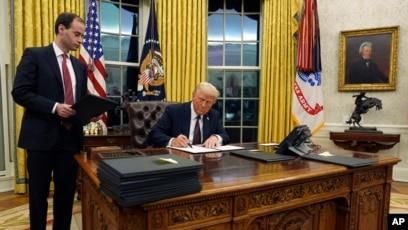 Why in News?
Why in News?
On his first day in office, President Donald Trump signed an executive order to withdraw the United States from the World Health Organization (WHO). This action has reignited discussions surrounding the U.S.'s role in global health diplomacy and its commitment to multilateral cooperation.
- Withdrawal from WHO initiated due to dissatisfaction with its management during the COVID-19 pandemic.
- The U.S. contributes significantly to WHO's funding, and its exit will have severe implications for global health initiatives.
- The decision raises questions about U.S. influence in international health policy and governance.
Additional Details
- Mishandling of the COVID-19 Pandemic: President Trump criticized the WHO for its delayed response to the pandemic and its perceived leniency towards China regarding accountability.
- Financial Burden: The U.S. is the largest contributor to WHO, paying between $100 to $122 million in assessed dues annually, alongside nearly $1.3 billion in voluntary funding for 2022-2023. Trump deemed this financial obligation as "unfair" compared to China's contributions.
- Immediate Actions Outlined in the Executive Order:
- Halt in U.S. Funding: Cessation of all financial transfers to WHO.
- Personnel Withdrawal: Recall of U.S. government employees associated with WHO.
- Development of Alternatives: Seek other domestic and international partners to assume WHO's functions.
- Pandemic Treaty Exit: Termination of negotiations regarding WHO's pandemic treaty aimed at enhancing global response mechanisms.
- Implications of the Withdrawal:
- Financial Strain on WHO: Loss of nearly 20% of WHO's funding, which may disrupt health programs globally.
- Program Disruptions in Developing Nations: Funding cuts could impair immunization and disease surveillance initiatives in low-resource countries.
- Loss of Expertise: Reduction in collaboration with U.S. health institutions like the CDC, vital for global health initiatives.
- Domestic Consequences:
- Limited Access to Global Health Data: The U.S. risks losing vital information on emerging health threats.
- Vaccine Preparedness: Potential impacts on vaccine production due to reduced access to strain samples.
- Reduced Influence in Global Health Policy: The U.S. may lose its leadership role, allowing other countries to fill the gap.
- Geopolitical Shifts:
- The withdrawal may bolster China's influence in global health governance, as evidenced by its recent funding pledges to WHO.
- India's role in vaccine production positions it as a significant player in the evolving global health landscape.
In conclusion, the U.S. withdrawal from WHO presents numerous challenges and uncertainties for global health. It raises critical questions regarding international cooperation and the future of health diplomacy, emphasizing the need for reform within WHO to regain trust and effectiveness in global health governance.
GS3/Environment
Boreal Forests
Source: DTE
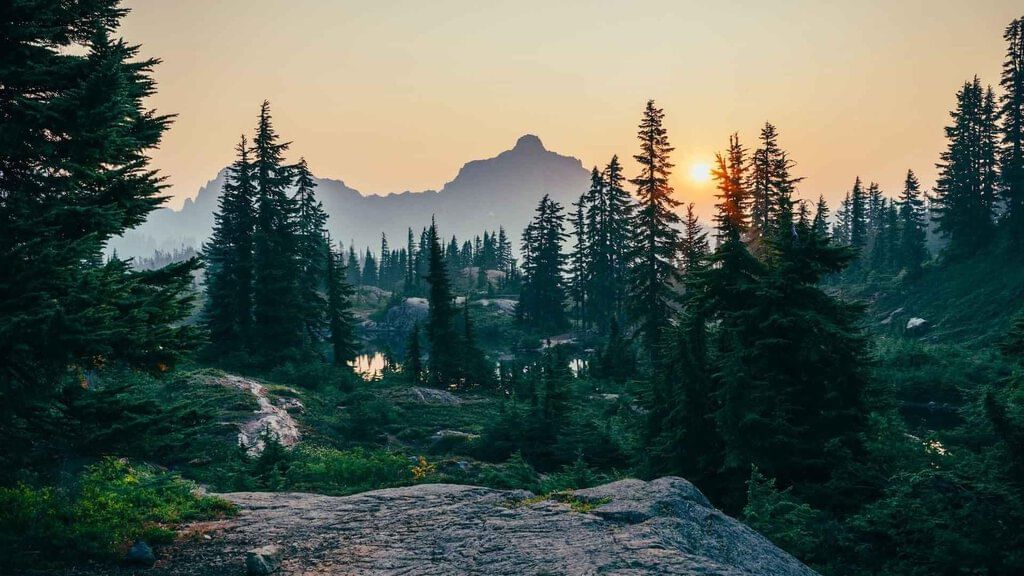 Why in News?
Why in News?
Recent studies indicate that nearly half of the world's boreal forests, which extend across Canada, Alaska, and Siberia, are experiencing significant changes due to climate change. This transformation is increasing their susceptibility to forest fires and affecting their crucial role as a carbon sink.
- Boreal forests, also known as Taiga, are the largest terrestrial biome on Earth.
- They are situated in high northern latitudes, forming a circumboreal belt around the globe.
- The forests lie between temperate forests to the south and the Arctic tundra to the north.
Characteristics
- Climate: Boreal forests experience long, cold winters and short, mild summers, characterized by low temperatures and low precipitation, often with frequent snow cover.
- Vegetation: The dominant vegetation includes coniferous trees such as pines, spruces, and larches, with some deciduous trees like birches and poplars. The understory features shrubs, mosses, and lichens.
- Soils: Typically acidic and nutrient-poor, the soils are formed under cool, moist conditions, leading to a thick layer of organic litter on the forest floor due to slow decomposition.
Ecological Importance
- Carbon Storage: Boreal forests are essential carbon sinks, storing more carbon than all tropical forests combined, due to the accumulation of organic matter in cold environments.
- Biodiversity: These forests are home to various wildlife adapted to cold climates, including moose, caribou, wolves, bears, and numerous bird species, providing critical breeding habitats for migratory birds.
- Hydrology: Boreal forests contain significant amounts of surface freshwater and are vital in regulating the global water cycle.
In summary, boreal forests play a critical role in the Earth's ecological balance, and their health is essential for maintaining biodiversity and combating climate change.
GS3/Economy
Diamond Imprest Authorisation (DIA) Scheme
Source: DD News
 Why in News?
Why in News?
The Commerce Ministry has recently launched the Diamond Imprest Authorization (DIA) Scheme to boost the global competitiveness of India's diamond industry.
- The scheme allows for duty-free imports of natural cut and polished diamonds, specifically those weighing less than ¼ Carat (25 Cents), for export purposes.
- It will come into effect on April 1, 2025.
Additional Details
- Export Obligation: The scheme requires exporters to have a value addition of at least 10%.
- Eligibility Criteria: Diamond exporters with Two Star Export House status and above, who have annual exports of at least US $15 million, can benefit from this scheme.
- This initiative addresses the policies of several natural diamond mining countries, such as Botswana, Namibia, and Angola, where manufacturers must establish cutting and polishing facilities to meet minimum value addition percentages.
- Moreover, the scheme is designed to support MSME exporters, creating a more equitable environment for smaller companies to compete with larger players in the diamond industry.
- The ultimate goal is to preserve India's leadership position in the entire diamond value chain globally.
In summary, the DIA Scheme is a strategic move by the Government of India to enhance the competitive edge of its diamond industry on a global scale, ensuring that even smaller exporters have the opportunity to thrive.
GS3/Environment
Asan Conservation Reserve (ACR)
Source: Times of India
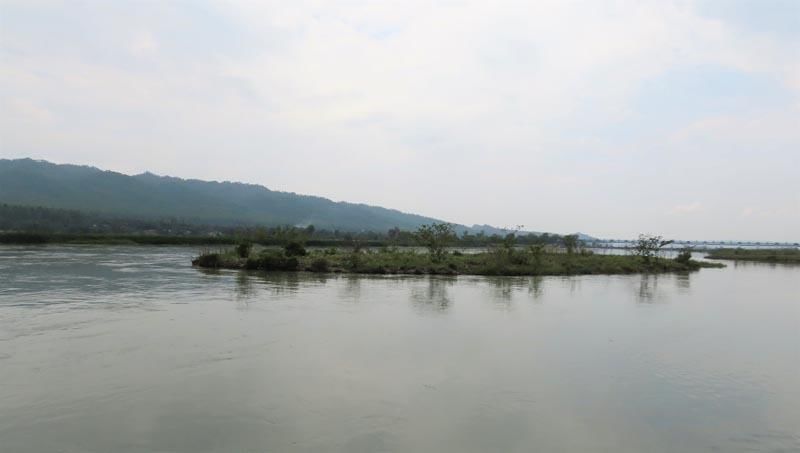 Why in News?
Why in News?
A recent bird counting campaign at the Asan Wetland, located in the Dehradun district of Uttarakhand, has led to the identification of an impressive total of 5,225 birds spanning 117 different species. This highlights the ecological significance of the Asan Conservation Reserve.
- The ACR covers an area of 444 hectares along the Asan River, leading to its confluence with the Yamuna River.
- Established as a Conservation Reserve in 2005, it falls under Section 36A of the Wildlife (Protection) Act, 1972.
- It is recognized as the first Ramsar site in Uttarakhand and is classified as an Important Bird Area by BNHS and BirdLife International.
Additional Details
- Bird Species Diversity: The reserve is home to approximately 330 bird species, including critically endangered species like the white-rumped vulture and Baer's pochard, as well as endangered species such as the Egyptian vulture and steppe eagle.
- Among the vulnerable species found are the marbled teal, common pochard, and Indian spotted eagle.
- In addition to avian life, the reserve hosts 49 fish species, including the endangered Putitor mahseer.
The Asan Conservation Reserve serves as a vital habitat for both migratory and native birds, playing a crucial role in biodiversity conservation within the Central Asian Flyways. Its recognition and protection are essential for maintaining ecological balance and supporting conservation efforts in the region.
GS3/Economy
National Mineral Development Corporation (NMDC) and Diamond Extraction
Source: BBC
Why in News?
India's state-run mining company, NMDC, is projected to extract approximately 6,500 carats of diamonds valued at $3.4 million during the current fiscal year. This extraction will occur from ores located in a mine near the Panna Tiger Reserve in Madhya Pradesh.
- NMDC is a fully owned public enterprise of the Government of India, established in 1958.
- It operates under the Ministry of Steel of the Government of India.
- In 2008, NMDC was designated as a "NAVRATNA" Public Sector Enterprise.
- NMDC is engaged in the exploration of various minerals, including iron ore, copper, and diamonds.
- The company is India's largest producer of iron ore.
- NMDC runs the only mechanized diamond mine in India.
Additional Details
- Established Year: NMDC was incorporated in 1958 and has since played a crucial role in mineral exploration.
- Mineral Exploration:The company explores a diverse range of minerals, including:
- Iron ore
- Copper
- Rock phosphate
- Limestone
- Dolomite
- Gypsum
- Bentonite
- Magnesite
- Tin
- Tungsten
- Graphite
- Beach sands
- Production Capacity: NMDC is currently producing over 45 million tonnes of iron ore annually from its mechanized mines in Chhattisgarh and Karnataka, making it one of the world's low-cost producers of iron ore.
- Sales Strategy: The majority of NMDC's high-grade iron ore is sold to the Indian domestic steel market through long-term sales contracts.
- Mining Complex Ratings: All NMDC mining complexes have achieved a 5-star rating from the Indian Bureau of Mines, Ministry of Mines.
- Headquarters: The registered office of NMDC is situated in Hyderabad, Telangana.
In conclusion, NMDC continues to play a vital role in India's mining sector, particularly with its planned diamond extraction and its status as a leading iron ore producer.
GS1/Geography
Mount McKinley
Source: The Forbes
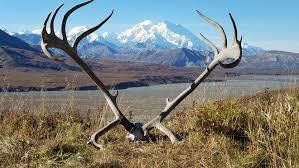 Why in News?
Why in News?
Recently, the US President signed an executive order to change the name of Denali back to Mount McKinley, highlighting the ongoing debate over the naming of this iconic peak.
- Mount McKinley is the highest peak in North America.
- It is situated in the Alaska Range, near the Denali Fault in south-central Alaska.
- The mountain is predominantly a massive block of granite formed through tectonic activity.
- It rises approximately 18,000 feet (5,500 meters) from its base at the Denali Fault to its southern summit.
- Permanent snowfields on the upper half of the mountain feed several glaciers.
- It is a key feature of the Denali National Park and Preserve.
Additional Details
- Denali Fault: This fault is located in southern Alaska and has significantly influenced the geological history of the region. Studies indicate that three sites along this fault were previously part of a single geological feature, marking the final union of two landmasses millions of years ago.
- Over 483 km of horizontal movement along the Denali Fault has disrupted this once-united feature due to extensive tectonic activity over millions of years.
- These locations represent a terminal suture zone, indicating the last phase of tectonic plate integration into a larger landmass.
The renaming of Denali to Mount McKinley reflects the historical and cultural significance of the mountain, as well as the geological processes that have shaped it over millions of years.
GS2/International Relations
Time to Seize the Promise of the U.S.-India Nuclear Deal
Source: The Hindu
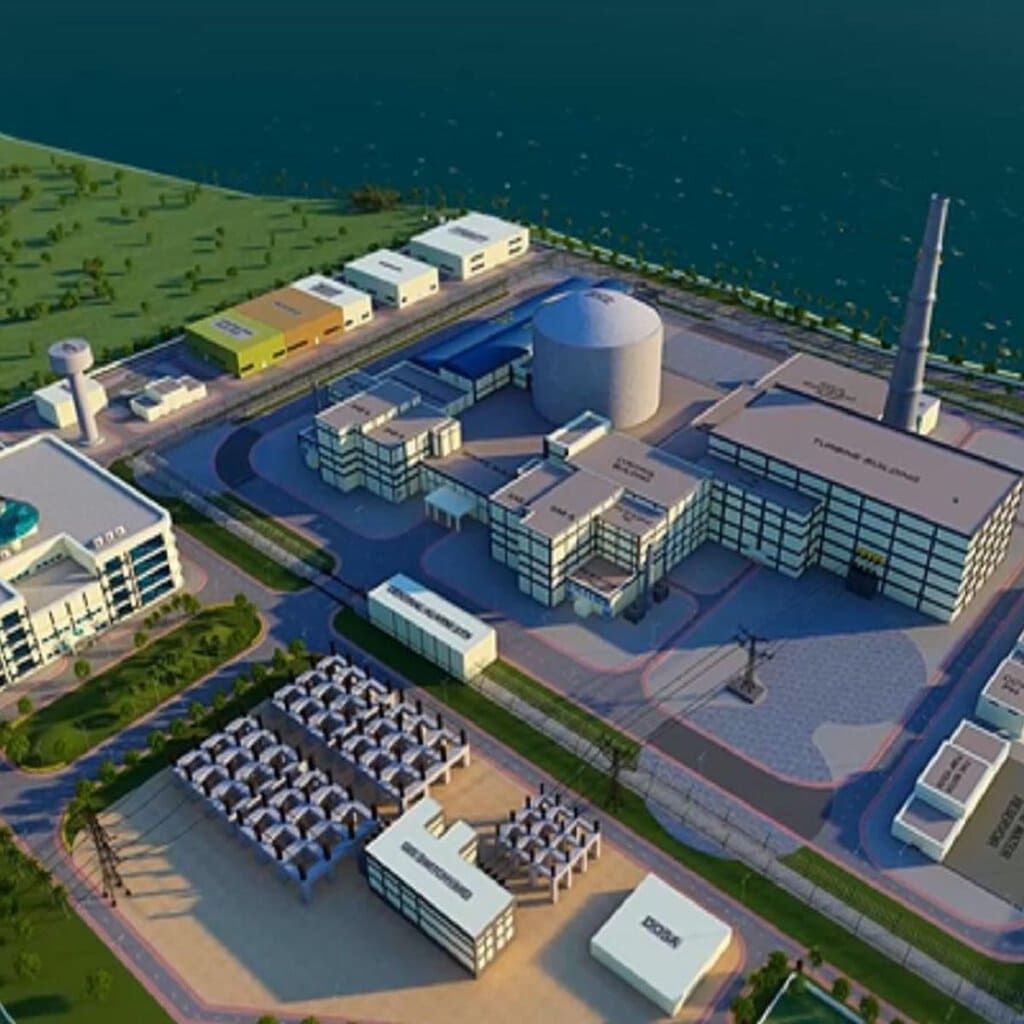 Why in News?
Why in News?
The U.S.-India civil nuclear deal, finalized in 2008, is a significant milestone in international diplomacy and strategic cooperation. Despite its promise of enhanced strategic collaboration, the deal has not fully realized its potential in the energy and commercial sectors. With the new U.S. administration, it is crucial to revisit the historical significance of the agreement while addressing the multifaceted challenges that have hindered its full realization and exploring strategies to overcome these obstacles.
- The U.S.-India civil nuclear deal marked a pivotal shift in bilateral relations, fostering trust and collaboration.
- Major challenges include unfulfilled energy promises, regulatory barriers, liability issues, and technological hurdles.
- Strategies to overcome these challenges involve revising liability laws, enhancing technological collaboration, and strengthening regulatory frameworks.
Additional Details
- Historical Significance: The deal initiated a new era of strategic cooperation, moving past Cold War estrangement and establishing trust that has enabled deeper military and technological ties.
- Unfulfilled Energy Potential: Despite expectations for robust nuclear cooperation and clean energy production, projects have stalled due to bureaucratic hurdles and structural challenges.
- Liability Risk Conundrum: India's Civil Liability for Nuclear Damage Act of 2010 poses risks for foreign suppliers, complicating U.S. participation in the Indian nuclear market.
- Technological and Economic Challenges: U.S. firms face pressures to provide advanced technology at competitive prices amidst concerns over cost overruns impacting electricity rates in India.
- Potential Solutions: Revising the liability framework, increasing R&D collaboration, addressing consumer cost concerns, and developing a robust regulatory framework are essential for moving forward.
The U.S.-India civil nuclear deal represents a profound diplomatic achievement, yet much of its promise remains unrealized. Overcoming the existing regulatory, liability, technological, and economic challenges will require collaborative efforts from both countries. The stakes are high, but the potential rewards—clean energy, economic growth, and strengthened bilateral relations—are equally significant.
GS3/Defence & Security
Pralay Missile
Source: Deccan Herald
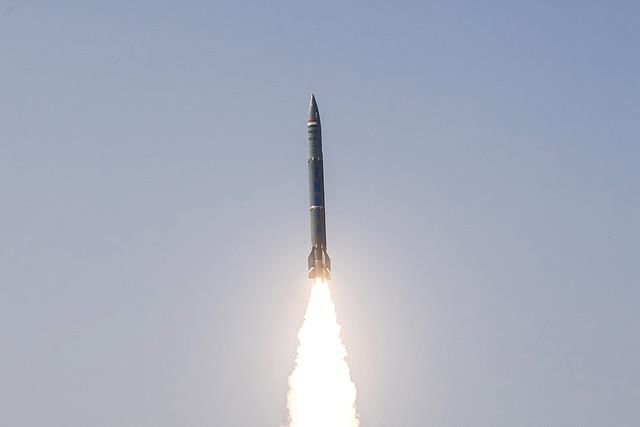 Why in News?
Why in News?
The indigenously developed Pralay missile will be showcased during the Republic Day Parade for the first time, as announced by the Defence Secretary.
- The Pralay missile is a short-range, quasi-ballistic surface-to-surface missile.
- It has been developed by the Defence Research and Development Organisation (DRDO).
- Designed for deployment along the Line of Actual Control (LAC) and Line of Control (LoC).
Additional Details
- Development Background: The missile is based on the Prithvi Defence Vehicle from the Indian B Programme.
- Power Source: It is powered by a solid-propellant rocket motor.
- Range: The missile has a range of 150-500 km and can be launched from a mobile launcher.
- Payload Capacity: It can carry payloads ranging from 500-1,000 kg, primarily designed for conventional warheads.
- Guidance System: Equipped with advanced guidance systems, providing a Circular Error Probable (CEP) of less than 10 meters.
- The missile can reach terminal speeds of Mach 6.1, making it effective against a variety of targets including radar installations, command centers, and airstrips.
- Path Alteration: It has the capability to change its trajectory mid-air after covering a certain distance.
This missile represents a significant advancement in India's defense capabilities, showcasing indigenous development and technological prowess in missile technology.
GS2/Polity
Trump Signs Executive Order to End US Birthright Citizenship
Source: The Hindu
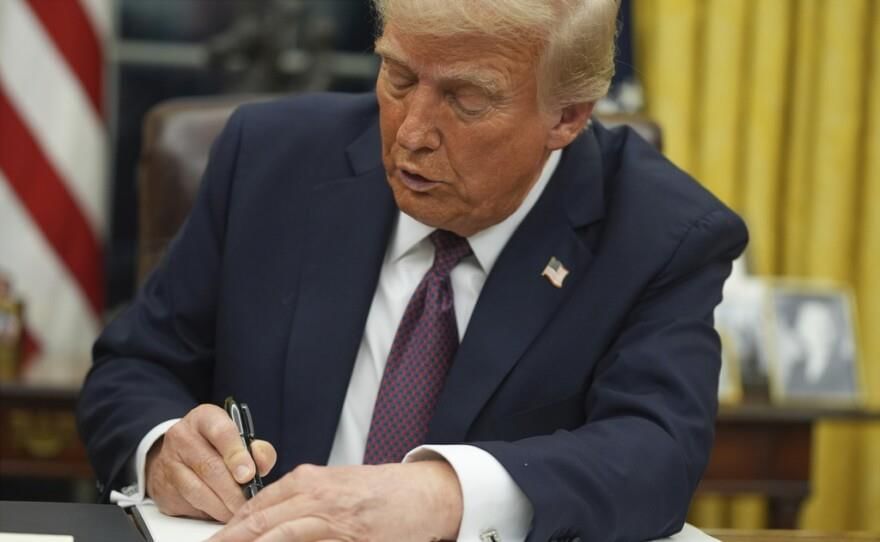 Why in News?
Why in News?
On his first day in office, US President Donald Trump signed several executive orders, including a controversial one aimed at ending birthright citizenship for children born to parents who lack legal status. This decision sparked immediate backlash, leading to lawsuits from various immigrant and civil rights organizations, including the American Civil Liberties Union.
- Trump's executive order seeks to revoke birthright citizenship for children of undocumented parents.
- The order challenges the traditional interpretation of the Fourteenth Amendment.
- Legal challenges are expected, requiring a constitutional amendment to enact such changes.
- The Indian-American community could be significantly impacted by this policy.
Additional Details
- Birthright Citizenship:This principle automatically grants citizenship at birth, existing in two forms:
- Jus soli: Citizenship based on birthplace.
- Jus sanguinis: Citizenship based on ancestry, applicable to children born abroad to US citizens.
- Fourteenth Amendment: Adopted in 1868, it guarantees birthright citizenship, stating that "all persons born or naturalized in the United States, and subject to the jurisdiction thereof, are citizens of the United States."
- Categories Excluded:Trump’s order identifies two categories of individuals not subject to US jurisdiction:
- Unlawful Presence: When the mother was unlawfully present at the time of birth.
- Lawful but Temporary Presence: When the mother was in the US temporarily, such as on a visa.
- Legal Challenges: To eliminate birthright citizenship, a constitutional amendment is required, necessitating a two-thirds majority in both the House and Senate, along with approval from three-quarters of the states.
- Impact on Indian Community: Indian professionals on H-1B visas and families awaiting Green Cards may face significant uncertainty regarding their children’s citizenship status.
- Economic Considerations: The Indian community plays a vital role in the US tech industry and healthcare sectors; changes to birthright citizenship could hinder contributions from this group.
In conclusion, Trump's executive order has generated a climate of uncertainty for Indian professionals and families in the US. The potential revocation of automatic citizenship for their children may deter future immigration from India and shift aspirations towards more immigration-friendly countries, affecting the growth and contributions of the Indian-American community.
GS2/International Relations
Indus Waters Treaty, 1960 — Decision by the Neutral Expert on His Competence
Source: Indian Express
Why in News?
Michel Lino, the Neutral Expert appointed by the World Bank, has declared his "competence" to adjudicate issues related to hydroelectric projects under the Indus Waters Treaty (IWT) of 1960. This decision has been welcomed by India, which asserts that all seven technical disputes fall within the Neutral Expert's jurisdiction.
- The IWT allocates the three eastern rivers (Sutlej, Beas, Ravi) to India and the three western rivers (Indus, Jhelum, Chenab) to Pakistan.
- The treaty was signed in 1960 to ensure equitable water sharing between India and Pakistan.
Additional Details
- Dispute Resolution Mechanism: The IWT establishes a three-tiered process for resolving disputes, as outlined in Article IX of the treaty.
- Level 1 - Permanent Indus Commission (PIC):
- Initial Notification: Both countries must notify each other about any proposed projects on the Indus rivers, sharing relevant information.
- Role of PIC: The PIC is responsible for overseeing the treaty's objectives.
- Outcome: If the PIC cannot resolve the issue, it is escalated to the next level.
- Level 2 - Neutral Expert Appointment:
- World Bank’s Role: If the PIC fails, the World Bank appoints a neutral expert to mediate.
- Resolution Attempts: The neutral expert aims to resolve the dispute through technical assessments.
- Escalation: If unresolved, the dispute moves to the final level.
- Level 3 - Court of Arbitration (CoA):
- Final Step: Persistent disputes after the neutral expert's involvement are referred to the CoA.
- Chairperson: Appointed by the World Bank.
- Final Decision: The CoA’s decisions are binding.
- The current dispute involves India's Kishenganga and Ratle hydroelectric projects, with India advocating for resolution through the neutral expert, while Pakistan prefers the CoA's intervention.
- Pakistan initially sought a neutral expert in 2015 but withdrew this request in 2016, seeking arbitration instead, which India contested.
- India has engaged in treaty review talks under Article XII (3) of the IWT, issuing formal notices to Pakistan for review and modification.
- The neutral expert ruled in favor of India's position, affirming his competence to resolve the differences.
In conclusion, the Neutral Expert's decision is a significant step in addressing the ongoing disputes under the Indus Waters Treaty, emphasizing the structured approach to conflict resolution established by the treaty itself.
|
44 videos|5271 docs|1113 tests
|
FAQs on UPSC Daily Current Affairs: 22nd January 2025 - Current Affairs & Hindu Analysis: Daily, Weekly & Monthly
| 1. What were the main reasons behind the U.S. withdrawal from the World Health Organization (WHO)? |  |
| 2. What are the potential implications of the U.S. withdrawal from the WHO for global health initiatives? |  |
| 3. How does the U.S. withdrawal from WHO affect international cooperation in health crises? |  |
| 4. What are the reactions from other countries regarding the U.S. withdrawal from the WHO? |  |
| 5. What steps could the WHO take to address the concerns raised by the U.S. prior to its withdrawal? |  |
















